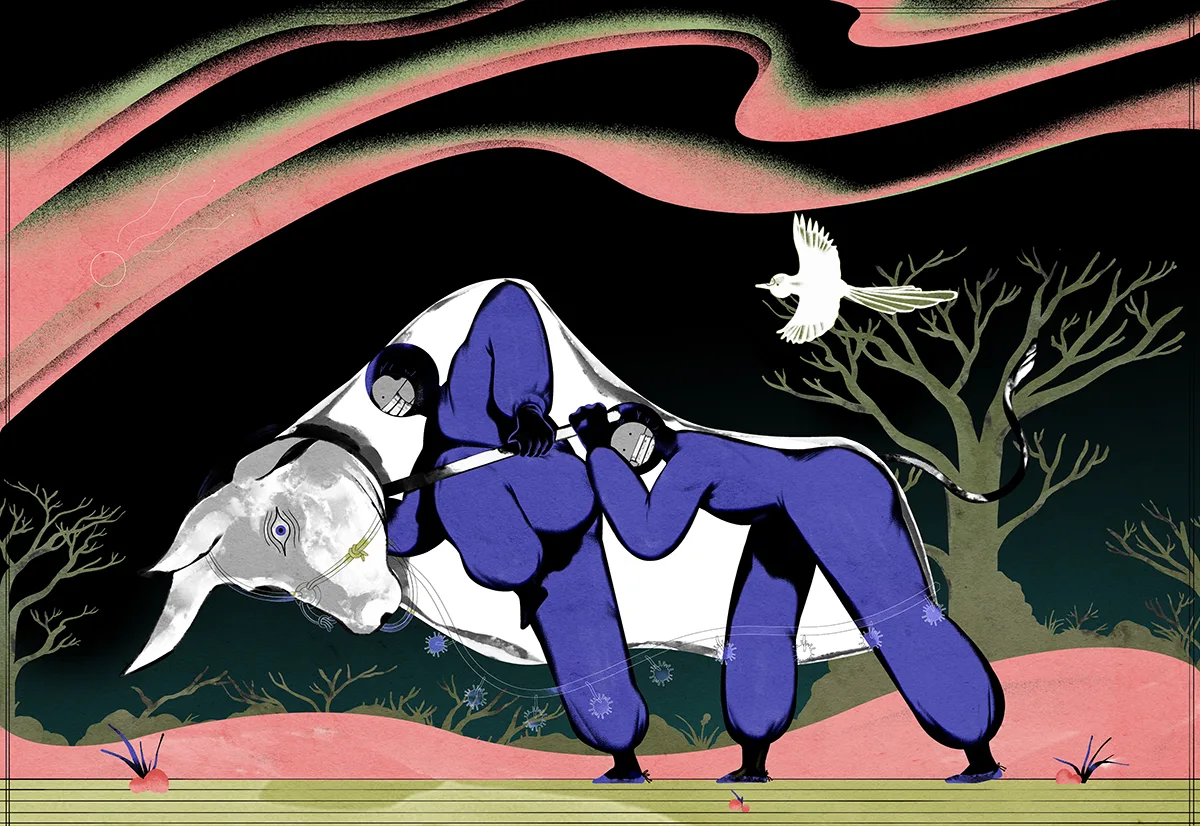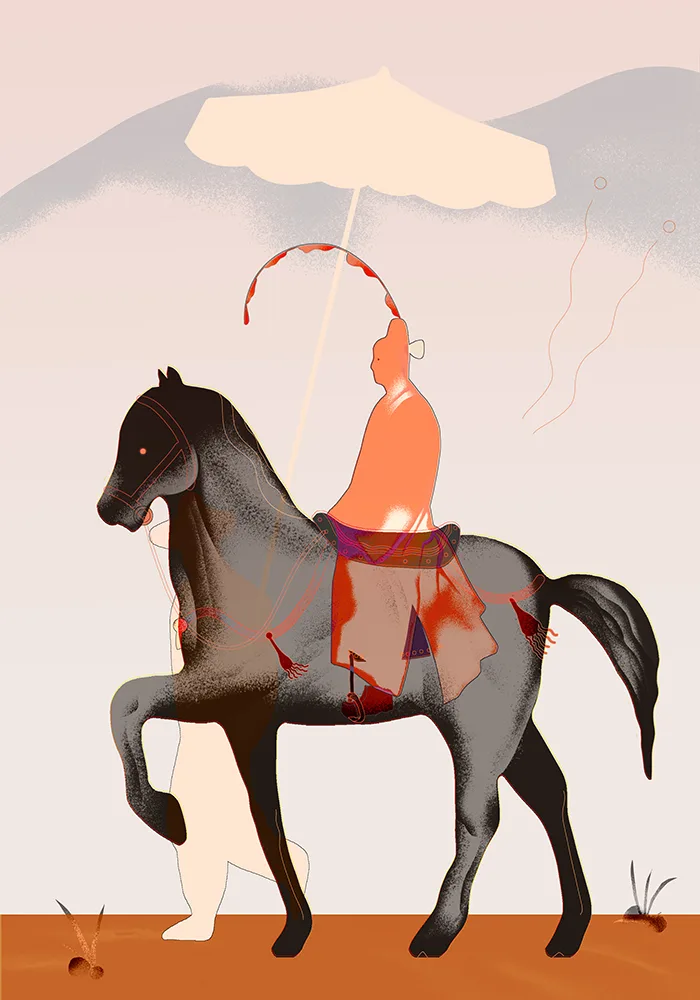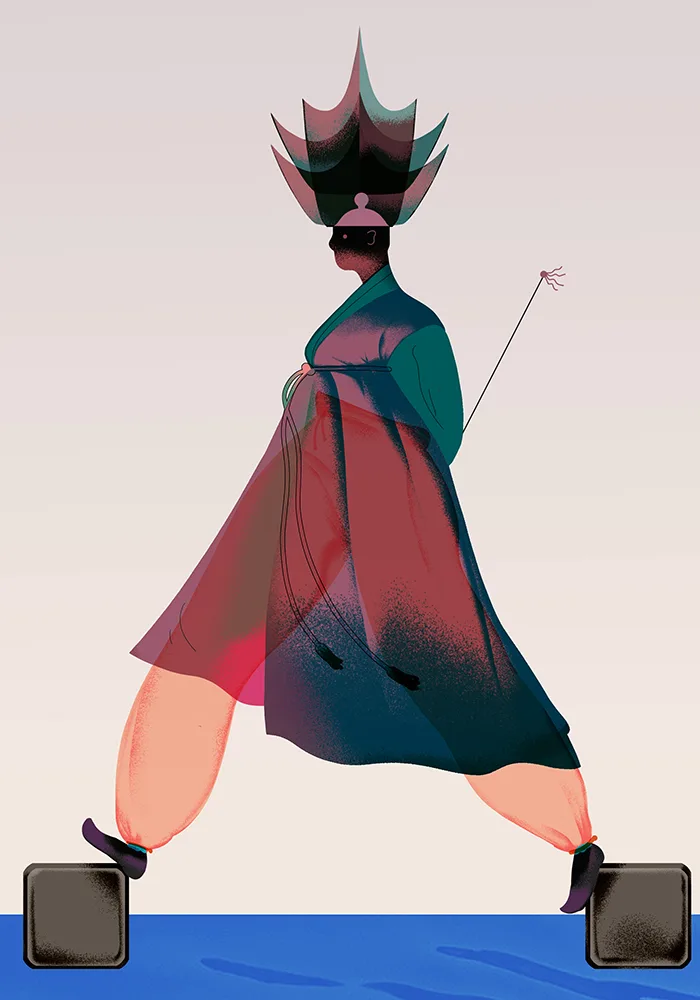
Illustrator Joonho Brian Ko’s characters are a homage to his Korean roots, but are infused with subtle features inspired by his time spent living elsewhere. They may wear traditional clothing, but the range of colors he shows them in and the stories he gives them are far from the people you’d find in Korean folk paintings. Let him take you through his process for crafting a character.
Joonho Brian Ko has been enamored with art since he was a child when his mum, who worked as a product designer, would leave her design books around the house. Growing up in Korea, though, he always felt that good academic results were the only measure of success there. Despite art and creativity piquing his interest, he shrugged it off for years.
When his family were forced to move to India for financial reasons, it didn’t take long for him to notice the different attitudes towards art there. People were more expressive creatively and, especially compared with Korea, everything was ablaze with color. In an entirely new place, he also had more time to learn things about himself.
“Of course it was difficult to erase everything I had been taught to think and start anew, but over time I realized that underneath this person I had been in Korea was this colorful, exciting splendor,” he says.
Brian only began to learn to draw for the first time at the age of 16 as he soaked in the vibrancy of his surroundings in India. That tendency to be aware of everything around him grew, and it’s this perceptiveness that fuels his work today, as he focuses almost entirely on drawing characters inspired by the people and the places he’s seen during his time living within different cultures. Here, he describes how he takes in influence and inspiration to create each of his curious protagonists.



“When it comes to creating characters, a study of real people is very important. I have a lifelong habit of remembering everyone I encounter in my life. It may sound a bit funny, but I always try to remember the outfits and the facial features of people walking by on the street. After they pass by, I’ll think “What were they wearing? How were they walking?” I think this kind of exercise helps me catch the smallest details of the character I’m going to draw. I think most of the time the clothes people wear or the way they move can tell you about their personality, so catching these visual details before I really know anything about them allows me to make guesses about their world.
All the characters I draw are inspired by these people I pass by in my life.
I’ve lived in very different cultures, from Korea to India to England, so I’ve seen diverse characters around the world. Although I’m Korean, I grew up in a foreign country for half of my life, so I was far from the culture. I came back to Korea due to the pandemic and stayed at my grandmother's house, and being surrounded by all the traditional objects and practises opened my eyes to their exceptional beauty.
I draw traditional Korean characters interpreted through the eyes of someone who’s experienced other places. To me, India was a country of colorful splendor, whereas the standard of beauty in the Joseon Dynasty my characters existed in was frugality and neatness. When I lived in England, I was very inspired by their free thinking and rich storytelling, while the purpose of Korean folk paintings was simply to be used as an archive. Even though my work is often based around Korean culture, I try not to hide the tiny pieces I’ve taken from other places.
When I see an image that I like in my daily life, I persistently think about how to put it on canvas before I actually grab my pen. I spend time studying people and references before I start drawing. For example, the Korean Characters series was inspired by my grandmother performing a traditional Korean dance while wearing her Hanbok on and took photos of her. Our family closet was filled with Hanboks so I studied how they moved and flowed while being worn. For the piece Returning Home, With Honour I referenced a small statue of a horse that had been in my grandmother’s house since long before I was born. The Wailing was inspired by Korean Shamanism and the tradition of exorcisms. Usually, when something bad happens to the family, the shamans perform a ceremony by wielding bells and knives in the air day and night to fight off the evil spirits.


I often try to change certain features about a character to see how I can affect the viewer. The characters in Stroll and Spell are male and female respectively, but I tried to swap the more gender normative factors, giving the man curves and drawing him in softer colors, while the woman appears strong in more gloomy colors.
These days, I always want to question the traditional gender roles. Growing up I would hear things like “you shouldn't cry more than three times in your life if you’re a man,” and now I know that a lot of my Korean friends had the same kind of experience. Hopefully, the more these features and characteristics are shown as flexible, the more the perceptions will change.”